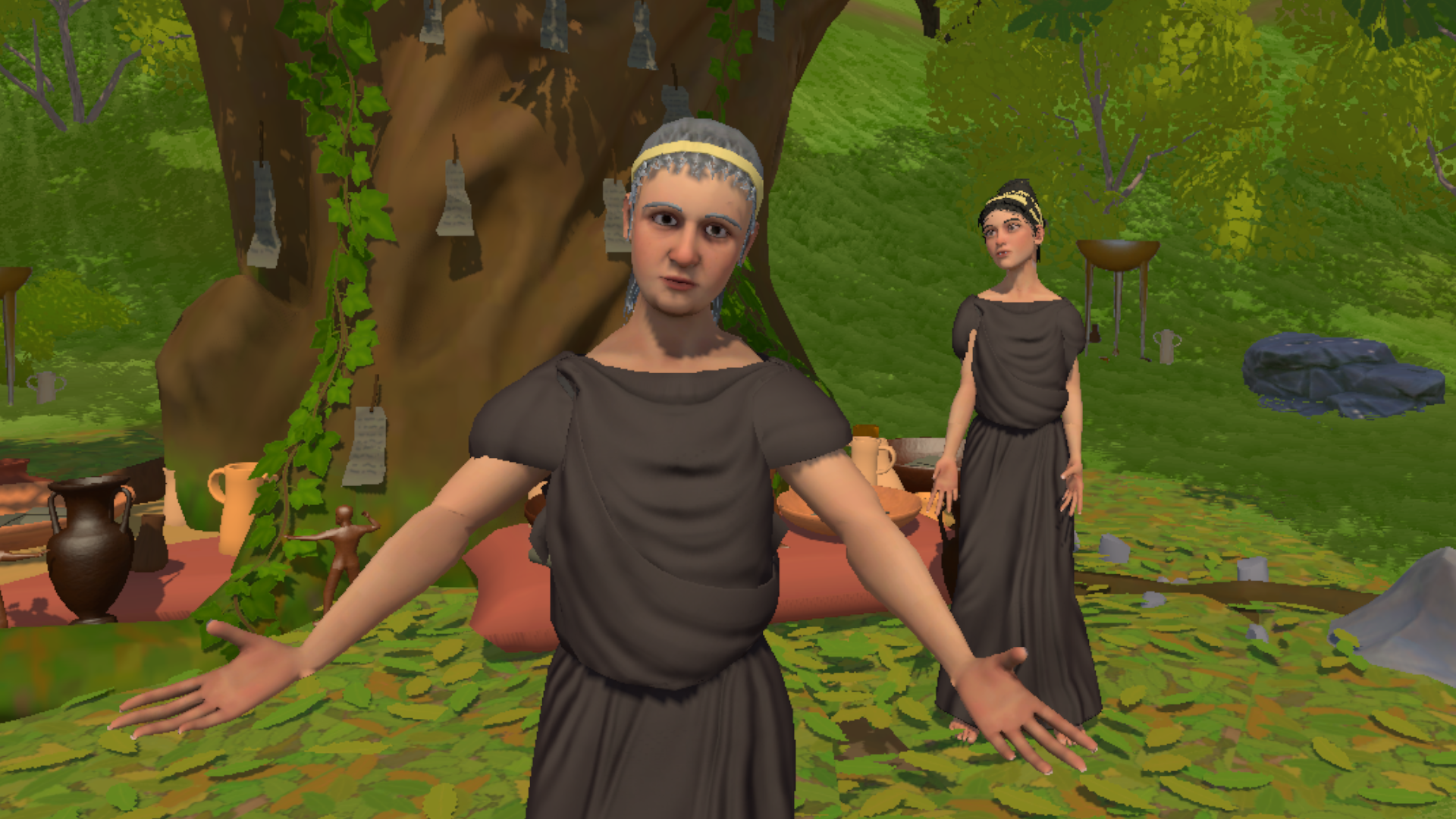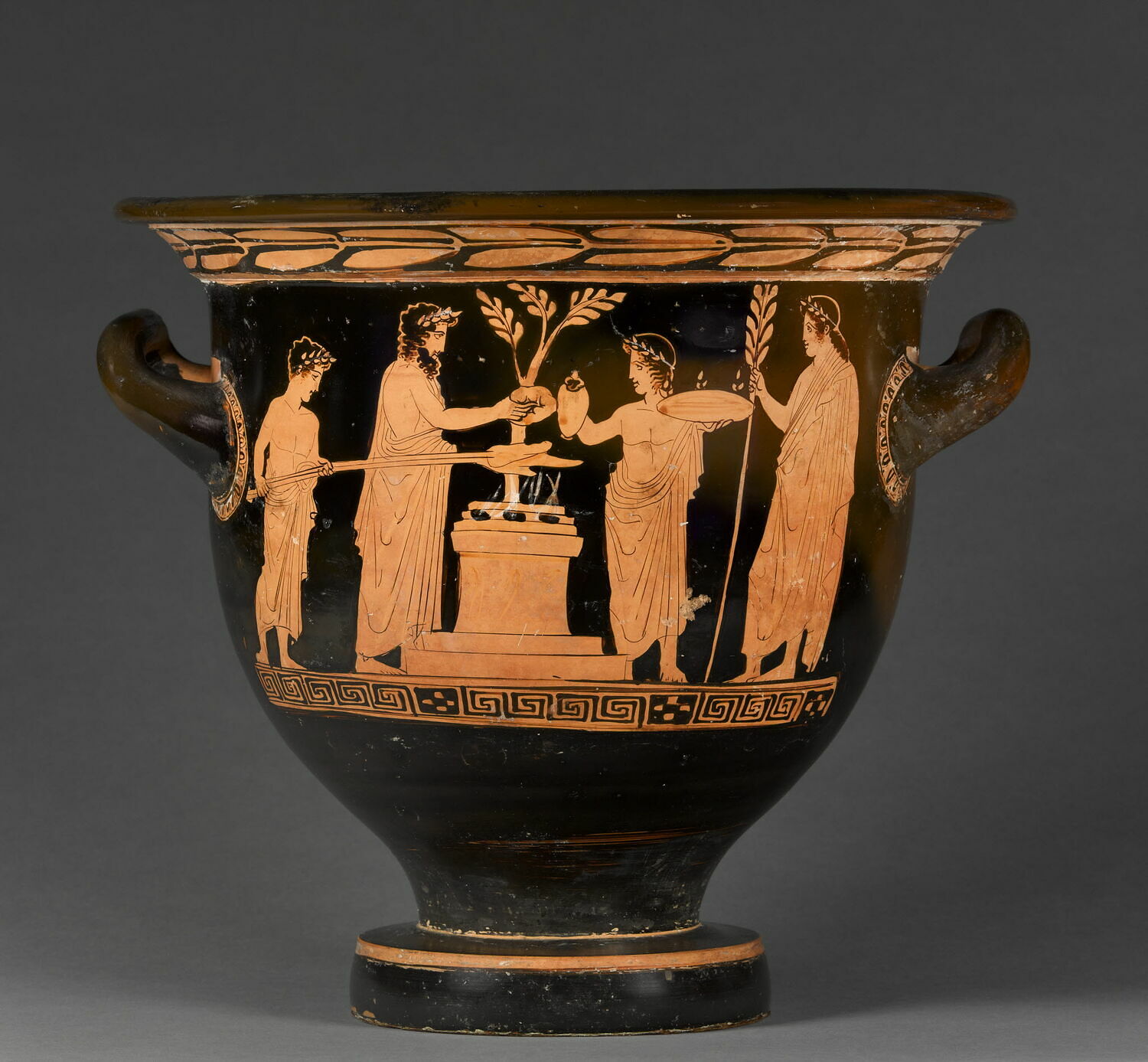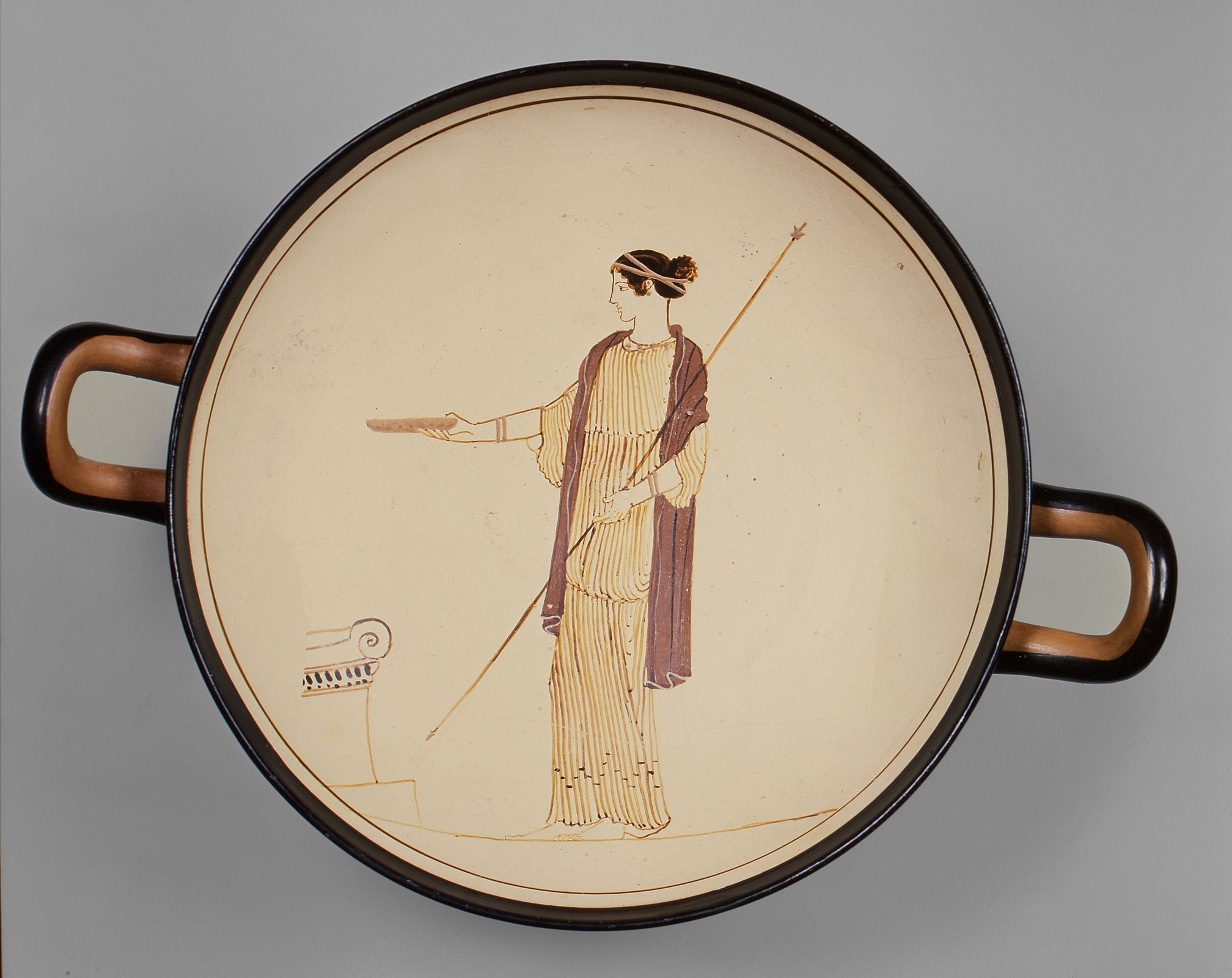Historical Resources
Dodona's Priests and Priestesses

The identity and role of the priests and priestesses that served the oracle of Zeus at Dodona, over its long history, is unclear.
Our oldest source, Homer, describes male priests, the ‘Selloi,’ (also known in some sources as ‘Helloi’) of Dodonean Zeus as men who ‘dwell … with their feet unwashed and their couches made upon the ground’ (16.233-238).

Source: RMN-Grand Palais (Louvre Museum) / Stéphane Maréchalle.
By the fifth century BCE, however, we find sources referring to female priestesses, sometimes called the peleiades or ‘doves’. They interpreted the will of Zeus, either through divine inspiration, via the sacred oak tree, or by lots. In the Trachiniae, Sophocles describes Herakles reflecting on the oracle given to him by ‘the ancient oak at Dodona,’ which was conveyed by ‘the two Peleiades’ (155-172). A fragment of Euripides' Melanippe Captive speaks of ‘the holy seat of Dodona, beside the sacred oak, [where] woman conveys the will of Zeus to all Greeks who may desire it.’
But the most famous of these accounts is by Herodotus (2.54-58), who describes how he heard two different but related tales about the founding of the sanctuary, one from the priests of Zeus at Thebes in Egypt, the other from the priestesses of Dodona, whom he names as Promeneia, Timarete, and Nicandra.

Source: The Metropolitan Museum of Art (metmuseum.org)
The Egyptian priests relate how two priestesses of the shrine in Thebes were abducted by the Phoenicians: ‘One of them (so, they said, they had learnt) was taken away and sold in Libya, and the other in Hellas; these women, they said, were the first founders of places of divination in the countries aforesaid.’ The priestesses, in turn, refer to two black doves who ‘flew from Thebes in Egypt, one to Libya and one to Dodona; the latter settled on an oak tree, and uttered there human speech, declaring that there must be there a place of divination from Zeus.’
Herodotus rationally interprets this story in light of the first and suggests that the ‘Hellas’ referred to by the Theban priests might be Dodona, and that the reference to ‘doves’ in the second story refers to the human priestesses of the first story. He explains the name given to the Dodona priestesses – peleiades or ‘doves’ – as referring to the fact that they spoke Egyptian, and this would have sounded to the people of Dodona like the cries of birds.
Richard Stoneman writes that ‘there is a notable dissonance between what Herodotus tells us of Dodona and what Homer says of its legendary origins. The priests Homer mentions have been replaced by priestesses. It is not the leaves that rustle, but the doves that speak.’
It may be that the Selloi and the Peleiades coexisted at the sanctuary. Certainly, the priestesses would have been supported by other temple servants; Herodotus refers to ‘the rest of the servants of the temple at Dodona’ in his account. And the methods continue to change: in the fourth century, Plato, in the Phaedrus, suggests that the priestesses at Dodona saw visions like the Pythia at Delphi; while other sources refer to the priestesses using lots.
References
- Eidinow, E. 2007. Oracles, Curses, and Risk Among the Ancient Greeks. Oxford: Oxford University Press.
- Parke, H.W. 1967. The Oracles of Zeus: Dodona, Olympia, Ammon. Oxford: Blackwell.
- Stoneman, R. 2011. The Ancient Oracles: Making the Gods Speak. New Haven, CT: Yale University Press.